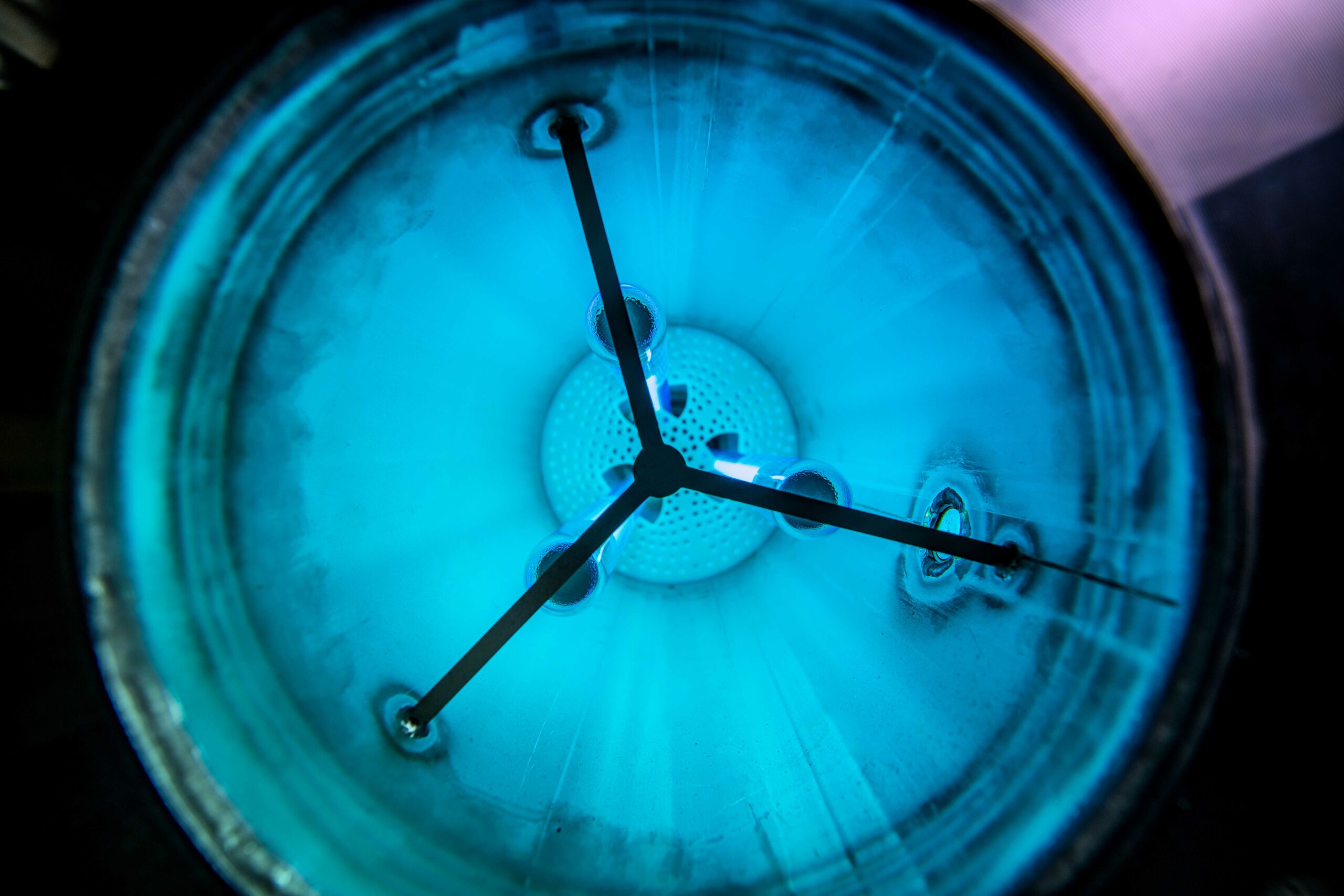We need to better protect our water against difficult-to-remove pollutants, such as pesticides, pharmaceutical residues, and industrial waste. Ideally, we want to remove these substances in the most affordable and sustainable way possible. This can be achieved through advanced oxidation using UV-C and hydrogen peroxide. But what is this complex technique? And what sets it apart from conventional methods? We explain it through 5 common questions.
1. What is advanced oxidation with UV-C and hydrogen peroxide exactly?
Advanced oxidation cleans water using hydroxyl radicals, which can be efficiently generated with UV-C light and hydrogen peroxide. Here’s how it works: water flows through a reactor, where it comes into contact with UV-C light and sustainable hydrogen peroxide. The UV-C light and hydrogen peroxide initiate a chemical reaction with the contaminants in the water. In simple terms, it breaks down the substances into small, harmless particles. This process essentially eliminates the pollutants in the water. Afterward, the water is safe for use or discharge.
2. What is advanced oxidation effective for?
Advanced oxidation is an extremely powerful cleaning process, making it suitable for removing a wide range of stubborn contaminants. Think of pesticides in agriculture, waste products from the (chemical) industry such as cyanide or benzidine, dyes, and pharmaceutical residues like medicines and antibiotics. Advanced oxidation prevents the discharge of these substances into the surface water and, consequently, the environment.
3. What are the advantages of advanced oxidation compared to purification techniques such as activated carbon and ozone?
Advanced oxidation stands out as a safe and sustainable alternative to conventional purification techniques due to several key benefits:
– Advanced oxidation produces no harmful byproducts
For example, water purification with ozone can lead to the formation of bromate, which is both carcinogenic and harmful to the environment.
– Advanced oxidation is more environmentally friendly
Sustainable hydrogen peroxide breaks down into harmless substances like water and oxygen, posing minimal environmental impact. The same applies to UV light. Additionally, it generates a minimal carbon footprint compared to, for instance, activated carbon.
-Very high removal efficiency
The combination of techniques (UV and hydrogen peroxide) is highly effective against a wide range of substances. Therefore, this single technique provides a solution for various types of contaminants.
-Disinfection
Advanced oxidation utilizes a high dose of UV-C light, not only breaking down target substances but also disinfecting the water. The disinfection dose is at least ten times higher than the Dutch standard for drinking water equipment.
4. Are there any drawbacks to advanced oxidation?
There may be reasons why an organization initially opts for a traditional purification method. In some cases, the energy consumption of advanced oxidation can be relatively high. To address this, Van Remmen UV Technology innovated the technique in collaboration with Nouryon, a Swedish producer of sustainable hydrogen peroxide. This collaboration resulted in the Advanox systems, made from high-quality materials, low-pressure UV lamps, and a patented system perfected through computer modeling. This combination ensures minimal maintenance requirements and optimal energy efficiency. Coordination of flow, lamp intensity, and hydrogen peroxide ensures that every droplet receives precisely the treatment it needs, with just the right amount of energy. This prevents over-treatment, chemical waste, and saves energy and costs while increasing reliability
5. Is Advanox a future-proof investment
Clean and usable water is becoming increasingly scarce worldwide. This trend leads to stricter legislation regarding water discharge, emphasizing the importance of intelligent water (re)use. Advanox proves to be a valuable technology for various sectors in this context. It minimally impacts the environment and effectively addresses a broad spectrum of pollutants.
When combined with other techniques, water treatment can become even more efficient, allowing for the removal of nutrients or antibiotic resistance alongside micro-pollutants. Moreover, when integrated with nanofiltration, sewage water can be transformed into water of drinking quality.
In essence, opting for a high-quality advanced oxidation system means choosing a future-proof business operation, a low Total Cost of Ownership, and, most importantly, contributing to a cleaner world.
